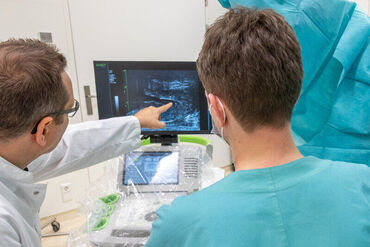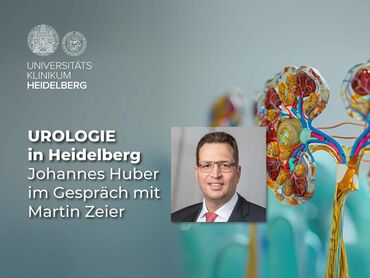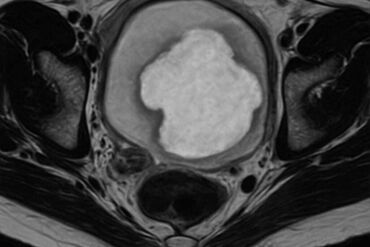Wir in den Medien
Collaborating For A Better Tomorrow: The Operating Room Of The Future
It’s an exciting time in healthcare. The innovation that is taking place today – from telemedicine to gene editing – was unimaginable decades ago. At the same time, advancements within the industry are happening in various pockets and not always coalescing when they’re most needed.
The diversification of innovation is undoubtedly positive – with so many different sectors of the industry working towards advancing medical technology. In order to truly progress, there has to be the opportunity for sectors to collaborate and for technologies to integrate.
One area where the opportunity to integrate is evident is in the heart of every hospital: today’s operating room, where there’s greater potential to leverage data to support better decision making and operational efficiency.
Today’s operating room
The OR is filled with medical equipment that produces a lot of different, valuable patient data recorded from previous procedures and collected in real-time during procedures. It is also crucial to have the latest medical data (medical history, allergies, medications, etc.) of the patient having a procedure. This data is absolutely necessary for a surgeon to have as he prepares for and during surgery. Some of this information is stored only in the hospital’s databases; it is not integrated with any of the devices in the OR. Therefore, there is no consolidated data available to the surgeon in the OR. It is each surgeon’s responsibility to combine the available data and bring it to mind just in the nick of time.
Concurrently, clinical researchers are using this data to augment their work, and this information is producing lots of valuable knowledge. If a researcher’s study is successful, it will be published. But could the study’s findings be leveraged in the clinical routine and be factored into the surgeon’s practice?
Today, it is up to surgeons and their operating teams to bring together this type of data and their experience into surgeries. But shouldn’t all the different types of medical data be seamlessly connected to support surgeons during procedures, augment their capabilities, and deliver a new experience to the operating staff?
The ecosystem surrounding today’s operating room
We’re seeing a bifurcation of innovation within the ecosystem that surrounds the OR. In the clinical arena, innovation is device-focused with all types of modern devices introduced into the operating room. Additionally, we’re seeing innovation that is software-based and only loosely coupled to devices in the realm of medical research.
Software innovation can augment the capabilities of devices in massive ways, but in our current landscape, we’re mostly seeing that connection made in clinical trials with a defined number of patients. There is no ecosystem right now that can bring software solutions to a broader market and marry this type of innovation with device innovation in the operating room for our collective benefit.
The operating room of the future
In the intelligent healthcare enterprise, we envision the operating room of the future to be one that is networked and integrates all data on an intelligent platform.
This platform needs to bring together the various device manufacturers, clinics, and independent software developers. And beyond merely connecting these disparate players, there’s a real need for an ecosystem that makes it financially attractive for them to publish their application programming interfaces (API) and invoice one another accordingly for services consumed.
The OP 4.1 prototype – a project partnership that includes the Department of Urology at the Heidelberg University Hospital, the German Cancer Research Center (DKFZ), KARL STORZ, mbits imaging, Siemens Healthineers, and SAP and was funded by the German Federal Ministry of Economic Affairs and Energy – aims to showcase how to connect the value chain in healthcare and life sciences by providing the right data at the right time, while introducing a solid business platform model for the exchange of research and intelligence.
The outlook is bright
Bringing the right mix of people together to collaborate is crucial, but to be successful, we must also consider what motivates each party and ensure those things are baked into the approach.
Here’s the vision of OP 4.1:
- Hospitals would be able to rely on the latest medical research earlier in their clinical routine with every single patient.
- Device manufacturers could open interfaces to their devices as they monetize access, and they could also provide attractive pay-per-use business models that help hospitals shift from capital to operational expenses.
- Developers could leverage existing devices and get their software-based innovations into the newly created market.
It’s also important to consider the power of network effects in driving success for a platform like this because it becomes more valuable the more entities participate. Consider this:
- The more hospitals participate, the more device manufacturers and developers will want to join because there’s now a bigger market available to them.
- The more device manufacturers participate, the more hospitals will join as there are more connected device-type offerings for them, and the more developers will join as there is more opportunity for device extensions.
- The more developers participate, the more hospitals will join as there are more software offerings, and the more device manufacturers will join as there are more opportunities for device-extending solutions, which means more revenue opportunity per device usage.
As more hospitals, device manufacturers, and developers join as a result of their peers’ participation, we’ll see even greater overall value in the marketplace. This could help improve peoples’ lives by increasing the effectiveness of surgeries and improving patients’ outcomes.
We all know that groundbreaking healthcare innovation involves collaboration, but we can’t forget that collaboration must also be powered by a sound business model that makes sense for all parties involved. It’s a tough and holistic challenge that can’t be solved by any one party but requires multi-sided, consolidated efforts from different contributors on an open and extensible platform to achieve the operating room of the future.











